Anti-inflammatory and nourishing to the skin, cucumber extract is a useful ingredient for homemade cosmetics. It’s simple to make and provides numerous benefits to the skin.
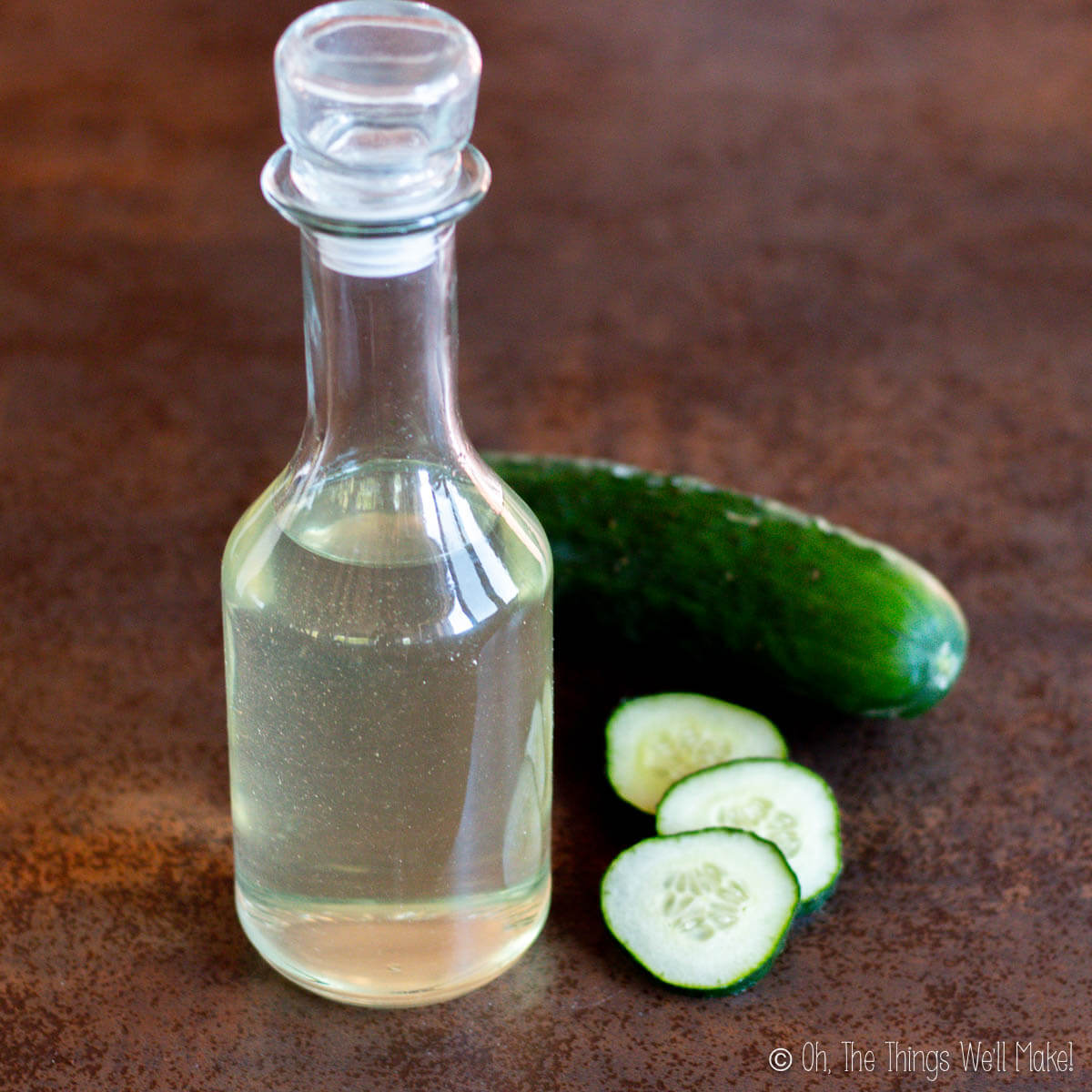
Cucumber extract is one of my favorite extracts for use in skincare. It’s also the first extract I attempted to make myself.
Why make it?
Cucumber extract is anti-inflammatory and soothes skin. It may also help with dark circles and puffiness around the eyes. Rich in minerals like potassium, it may help firm skin which can help reduce some of the signs of aging.
By making your own cucumber extract, not only can you save money, but you can also ensure the quality of the ingredients being used.
Ingredients
Cucumber extract is quite simple to make and only uses two main ingredients: cucumber and vegetable glycerin. Optionally, you can preserve the finished extract with a natural preservative.
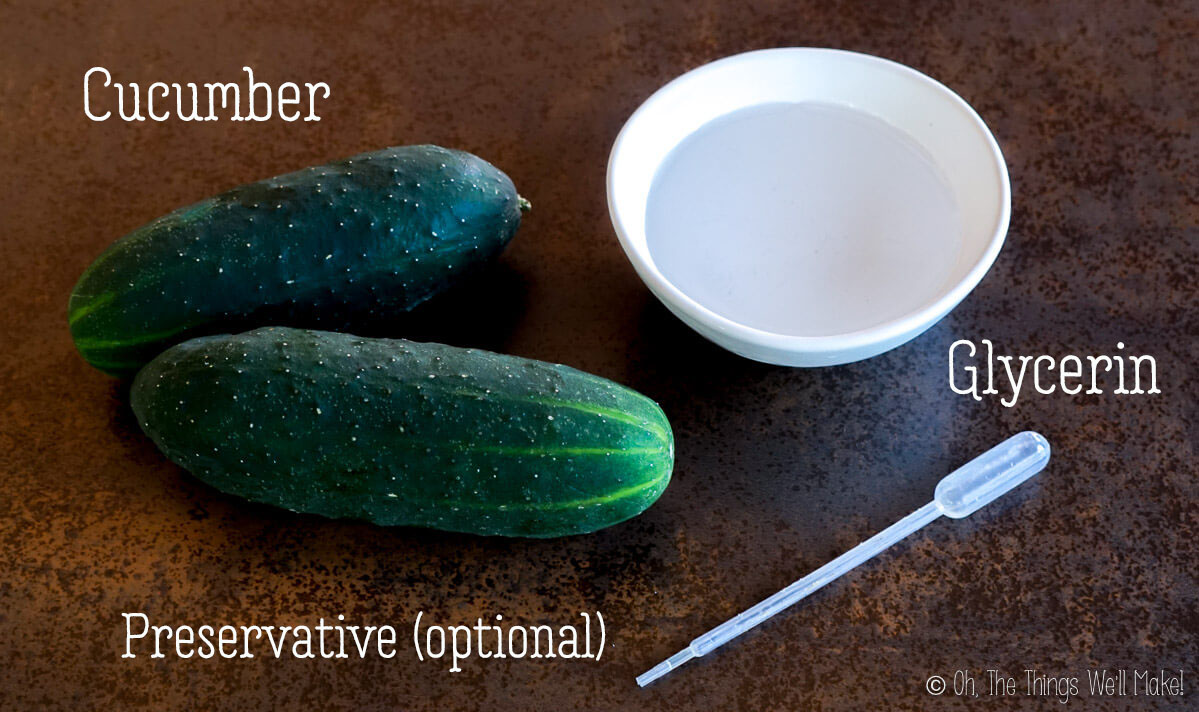
Procedure
Making the extract is very simple.
First, prepare the cucumber by peeling it and slicing it. While you could probably extract it unpeeled, by peeling it, you are exposing more of the flesh of the cucumber to help speed up the process. (I’m not sure if any of the components of the skin would be extracted and if they would be beneficial. You could experiment with adding some clean peels to a batch to see if you can notice a difference.)
Once you have sliced the cucumber, you can further cut it into smaller pieces that fit well into the container you plan to use for the extraction process. I used a clean glass jar. (Ideally, use one that is clean from the dishwasher, or rinse it, after cleaning it, with very hot water to help sanitize it.)
Add the cucumber pieces to the jar and cover them with vegetable glycerin. It’s a good idea to weigh the amount of glycerin added so that you can later determine how much water from the cucumber has been extracted into the glycerin.
Cover the jar and set it aside for a few days.
The next morning, you should already notice a difference in the way the cucumber pieces look. The cucumber pieces will reduce in size and lose their green color as the glycerin absorbs their moisture. Over the next couple of days, they may begin to shrivel even more.
Because of the amount of water in cucumber, the cucumber extract can be made very quickly. Glycerin is a humectant that effectively absorbs water. Even after only a few hours, the glycerin will be flavored with cucumber. When making other extracts with drier substances like vanilla beans, the process takes much, much longer! Check out my vanilla glycerin extract recipe.
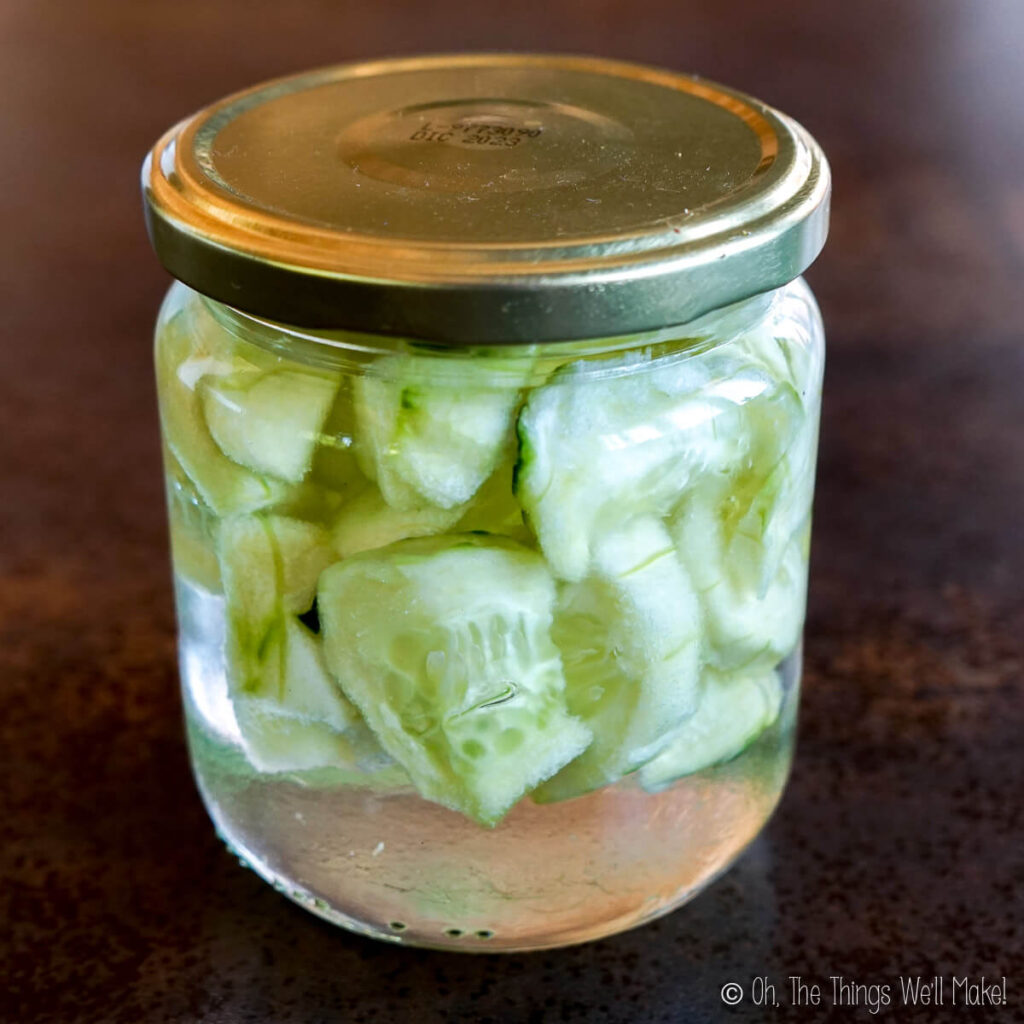
After a few hours 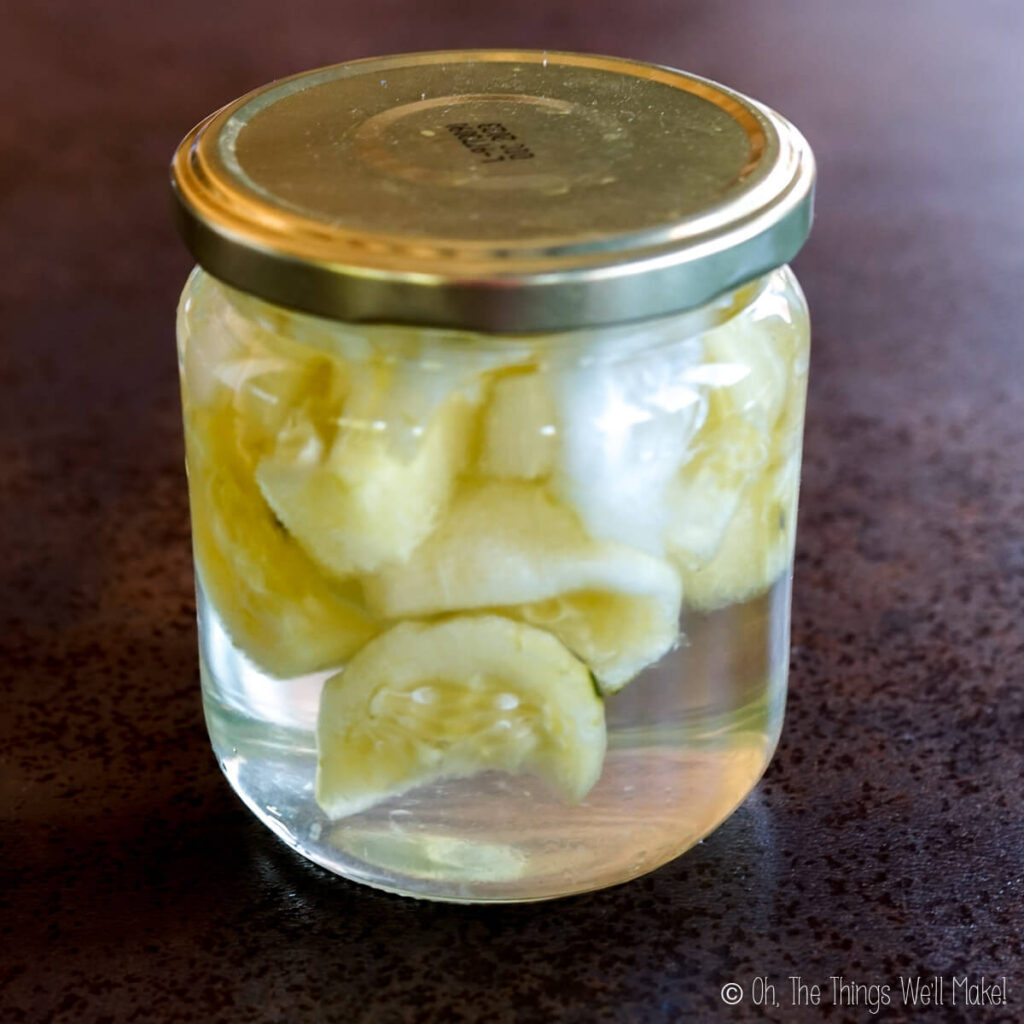
After a few days
Straining the extract
After a few days, you probably won’t notice any more significant changes in the appearance of the cucumber pieces. At this point, you can strain them out.
Strain the extract by pouring the cucumber mixture through a sieve into a clean jar below. Again, it’s helpful to weigh out the final amount of extract. You can then compare to the original amount of glycerin added to know how much cucumber juice has been infused into the glycerin.
I, personally, don’t press on the cucumber to try to push out any more cucumber juice, but some people do. I allow it to drip dry and then remove the sieve with the cucumber pieces.
Does it need a preservative?
Whether or not homemade extracts need a preservative is a bit controversial.
Glycerin, like alcohol, is a preservative. Unlike cosmetic preservatives sold for cosmetic use, though, it needs to be used in a very high percentage, over 40-50% of the recipe by weight, to safely protect against microbial growth.
To keep things on the safe side, I like to keep the amount of glycerin over 50% of the recipe, by weight. That’s why I suggest weighing the amount of glycerin added and comparing it to the final amount of cucumber extract. It will help give you an idea of the percentage of glycerin in your final extract.
Cucumber extract is edible. If you plan to use it in food recipes, don’t add any other preservatives to it. Instead, keep it in a cool, dry place and try to use it up within a couple of months.
If, on the other hand, you plan on using it solely for cosmetics, it’s a good idea to add a cosmetic preservative to it, just in case. You can add a weaker dose (following the lowest dosage of the recommended range for your preservative) as the glycerin is already doing some preservation. For most cosmetic preservatives, that will probably be around 0.5% by weight, or around half a gram for every 100g of cucumber extract.
To learn more about preservatives, check out my beginner’s guide to natural preservatives.
In case you’re curious, in my last batch, I began with 170g of glycerin and ended up with 237g of cucumber extract.
Uses
Cucumber extract can be added to a lot of different types of skin and hair care products. While I normally mostly use it in skincare, I’ve read that it may nourish the hair and even help promote hair growth. So, it may be a great addition to your homemade hair conditioner!
To add it, use cucumber extract in place of part or all of the vegetable glycerin of a recipe. If the recipe you are using doesn’t include any glycerin, you can use it in place of part of the water. Don’t use more than 5% of the recipe by weight. (So, if you are making 100g, don’t use more than 5g.) Over 5%, glycerin can make a product feel “sticky”.
Because your extract isn’t completely glycerin but includes some water too, you could go slightly over 5% in this case. Experiment with it to find the amount that works best for you.
Recipes using cucumber extract
Here on the blog, I used cucumber extract in a couple of recipes.
Because of the cooling effect of cucumber, I decided to add cucumber extract to my homemade after-sun lotion.
After Sun Lotion
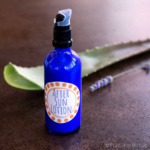
Because it is soothing and hydrating and has astringent properties that can help reduce puffy eyes, I also added it to my micellar water recipe. Micellar water is a mild cleanser that can be used with or without rinsing to gently remove makeup.
DIY Micellar water
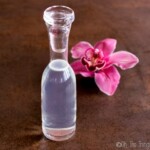
I also suggested adding cucumber extract in place of the glycerin in the following recipes:
Video
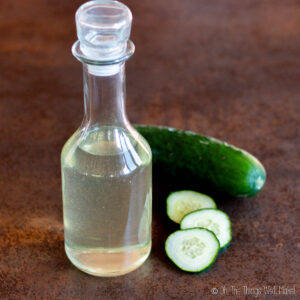
Cucumber extract
Materials
- 1 cucumber
- 175 g glycerin
Instructions
Prepare the extract
- Clean and peel the cucumber and cut it into slices. Further cut the cucumber slices into smaller pieces that will easily fit into your jar.
- Add the cucumber pieces to a clean jar. Cover the cucumber with vegetable glycerin. (Add enough to fully cover the cucumber pieces.)
- Cover the jar and leave it alone overnight. The next day, shake the jar or open it and stir the cucumbers and glycerin. This helps ensure the cucumber pieces are fully covered in glycerin, which will help prevent microbial (mold, bacteria) growth. At this point, the cucumbers will already have shrunk slightly and the glycerin will begin to take on a cucumber flavor.
Straining the extract
- After a few days, the cucumber won't change much in appearance anymore. At this point, you can strain out the cucumber by pouring the glycerite through a strainer into a clean jar or bottle below.
- Optionally, add a cosmetic preservative to your cucumber extract.
- Cover the jar or bottle, and store in a cool, dry place for up to 6 months.
 Español
Español
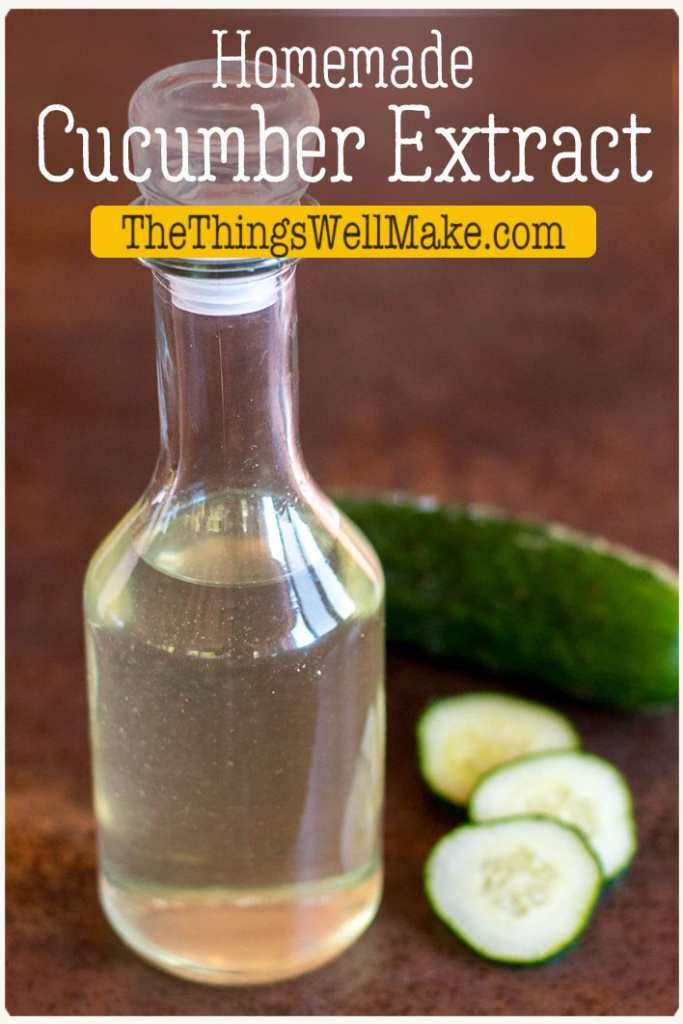
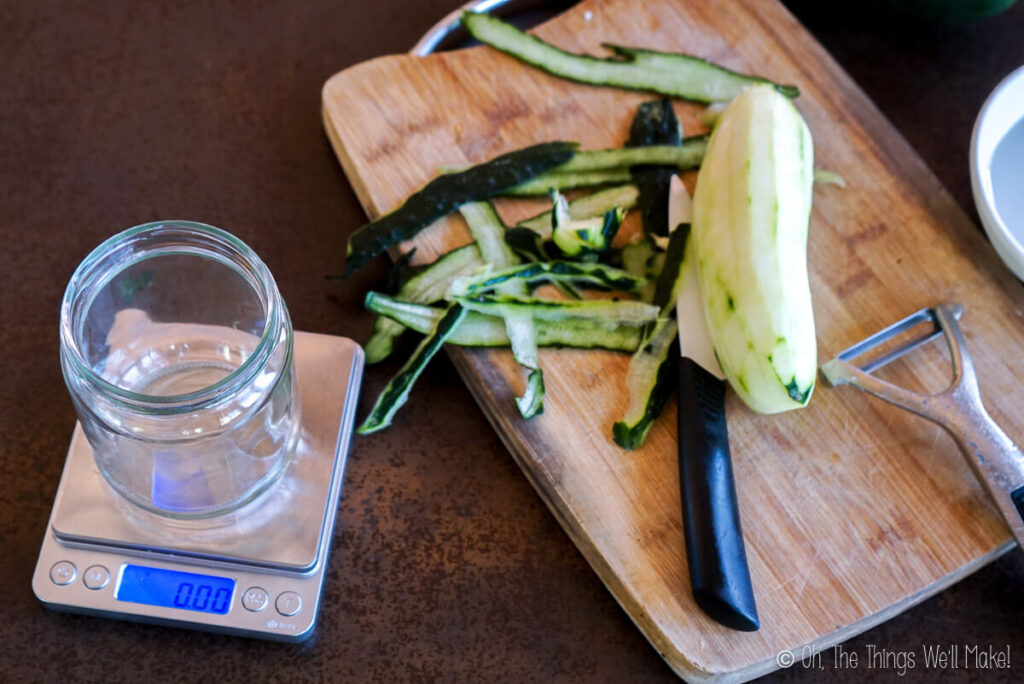
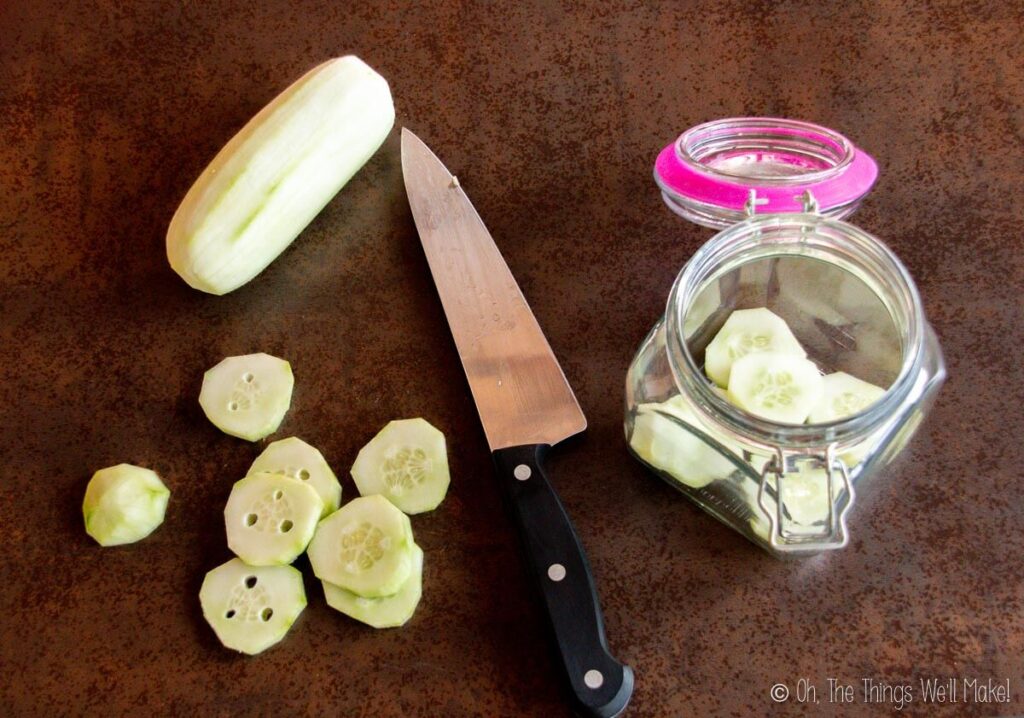
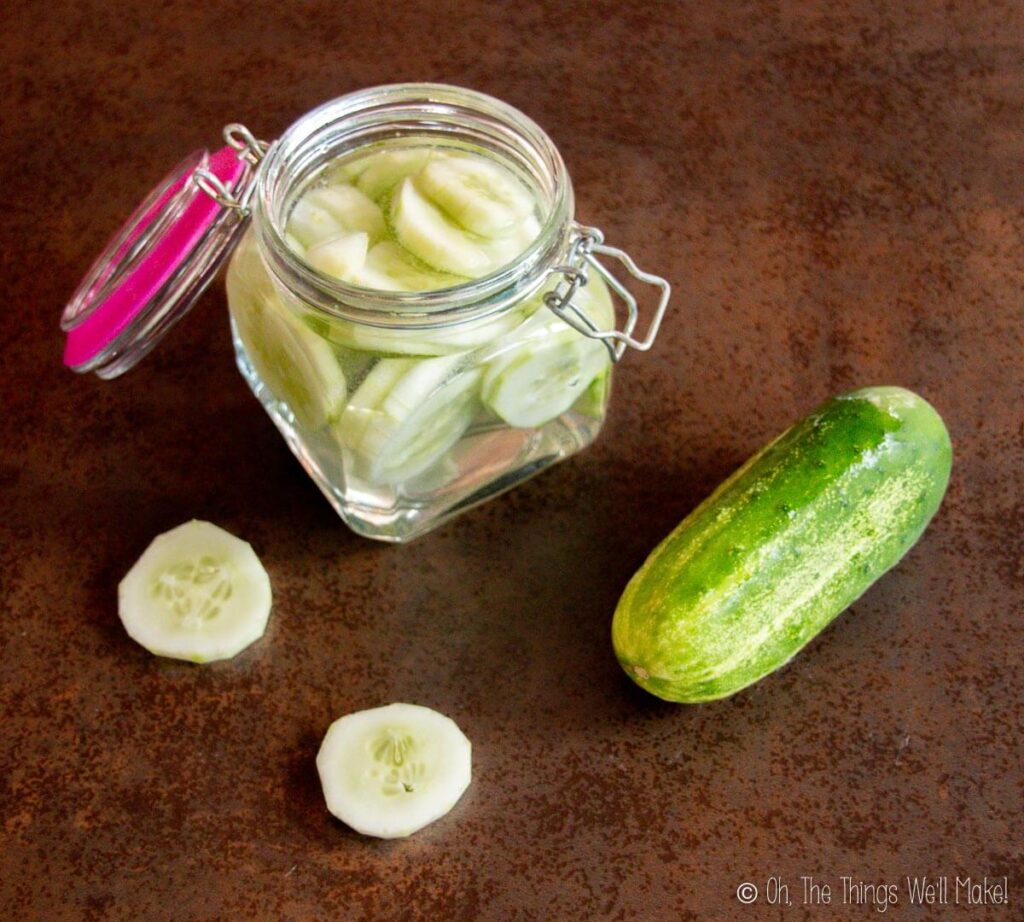
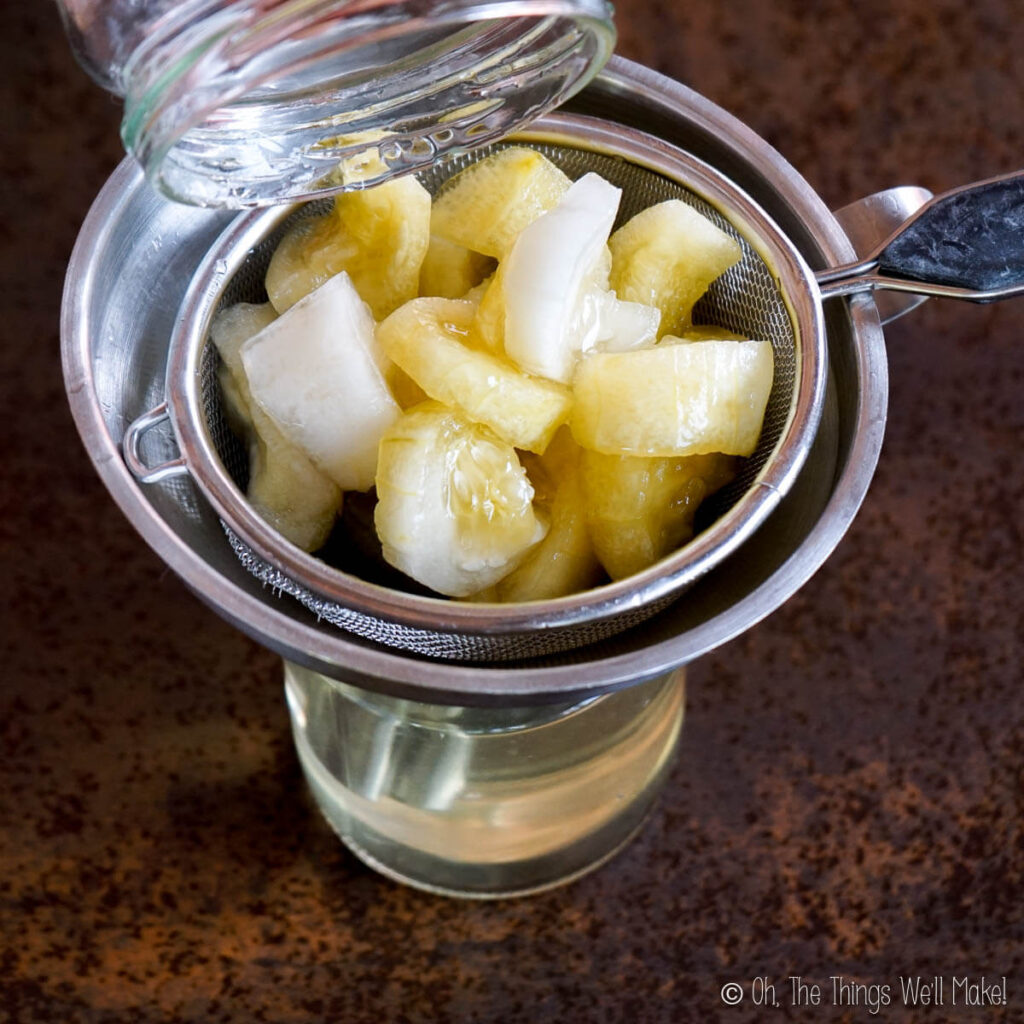
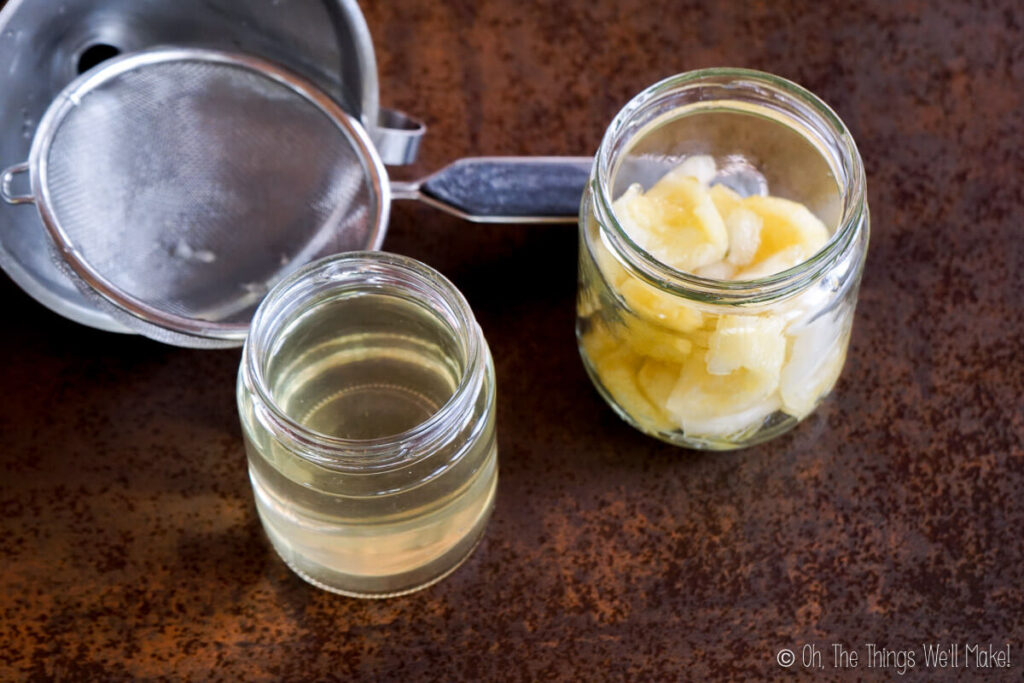
 Why and How to Make Aloe Oil
Why and How to Make Aloe Oil
Hollie
What do you recommed is a safe preservative to use (when using this for a cosmetic application)?
Tracy Ariza, DDS
I’d choose whatever you can find in your area locally. I like to use Sharomix as it’s readily available here in Spain, but other areas have other options more readily available.
Check my guide to natural preservatives for some ideas.
Jane
Just wanted to tell everyone that you have one thing VERY wrong and actually dangerous misinformation. Glycerin is ABSOLUTELY NOT A PRESERVATIVE in any way shape or form! Please do not make things like this thinking they are safe and contamination free when it’s a ripe formula for growing bacteria/mold without a proper preservative. You can start this process but around day 3 you will have bacteria growth and by the end of the week or less growth you can see without a microscope eg. mold like moldy food mold.
Tracy Ariza, DDS
Hi Jane,
I’ll respectfully disagree. Yes, it’s true that it isn’t a conventional preservative, but it does work to help preserve at high enough concentrations. It has been used in food preservation and even some pre-surgical preservation in the past. There are extensive studies on its preservation qualities. The problem is, you can’t use it as a preservative in most cosmetics because you’ll generally not want glycerin as the main ingredient. Glycerin feels sticky and is normally used at under 5% of cosmetic recipes. It obviously has no preservative qualities when used in that sort of recipe and is acting as a humectant.
You can, however, make glycerites like a non alcoholic vanilla extract. They don’t keep as long or as well as an alcohol based one, but they do have preservative qualities.
I make glycerites with plants like in my cucumber extract. It keeps very well. That said, for long term storage, I still recommended adding another preservative when wanting to keep it longer term for cosmetics (and not for food).
Amanda
In step 3, you say to stir the cucumbers and vinegar??? I assume this was a typo of some sort since someone else asked how much vinegar you need to add and you replied none.
Just an observation….but THANK YOU DO MUCH for this because I have been wanting to make cucumber extract for a while now, but had no idea how until now. Thanks again!
Tracy Ariza, DDS
Hi Amanda,
Sorry about that!
Thanks for alerting me to the issue! I’ve switched the “vinegar” to glycerin in that step.
I was making a new batch ofginger vinegar at the same time that I was working on this recipe, so I must have had vinegar on the brain. It’s funny because I was probably really confused about the vinegar question when I got it. hahaha
It never occurred to me to look to see if there was something that made her ask me that. So, thank you!
Emily Barber
Hi Tracy,
Thank you so much for this! I just wanted to double check, that the recipe you have used for cucumber and glycerine is safe for consumption. I would like to add it to my water to drink. Thanks, take care
Tracy Ariza, DDS
Hi Emily,
While that wasn’t my intention for the recipe, yes, as long as you don’t add the preservative, it should be safe for consumption. Just keep in mind that consuming large amounts of glycerin may give you headaches or have a laxative effect. For small amounts as a flavoring, though, you should be fine. 😉
Conny
Hello Tracy,
what quantity of vinegar should be added to this product.
thanks
Tracy Ariza, DDS
Hi Conny,
There is no need or reason to add vinegar to this.